Which is better: Greece or Croatia?
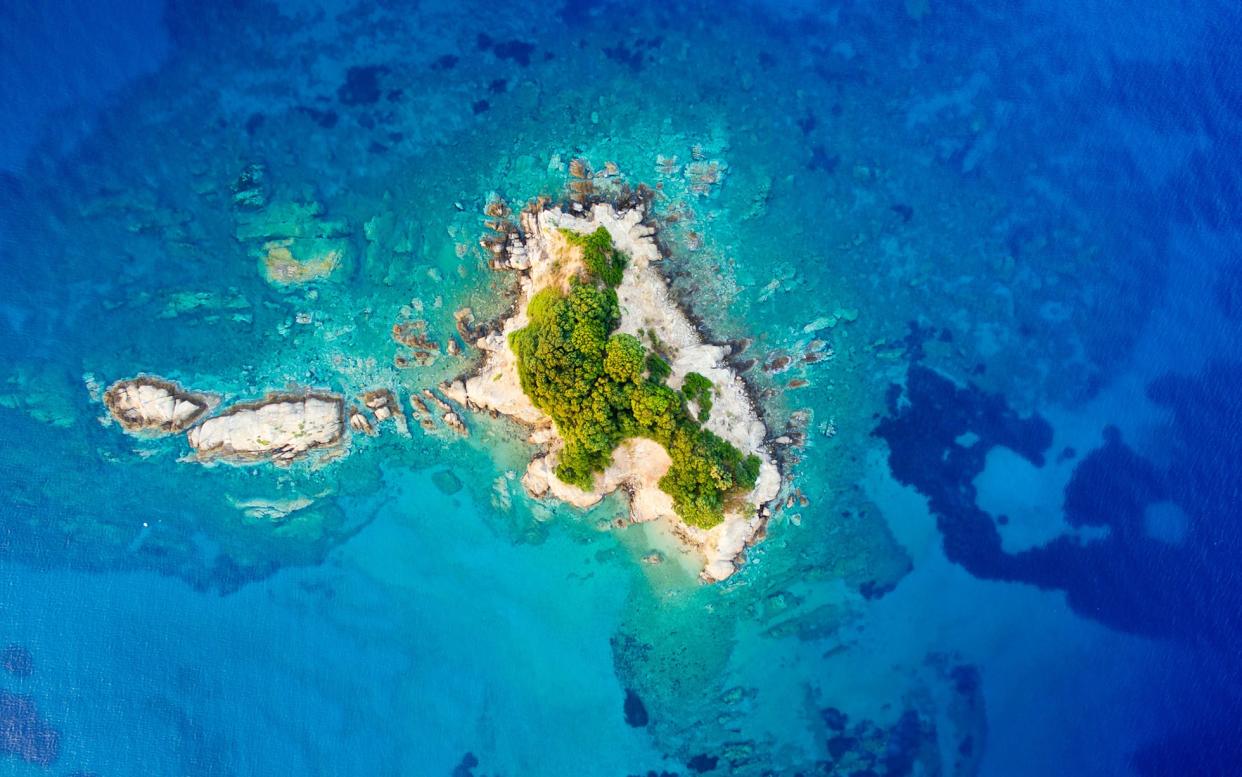
Can’t choose between the eastern Mediterranean gems of Greece and Croatia? Let our experts help you decide.
Why Greek islands are better
Linda Cookson
So interchangeable are the islands of Greece and Croatia say the producers of the Mamma Mia! film sequel (due for release this July) that they have chosen Vis, off the Dalmatian coast, as a stand-in for the story’s fictional Greek island of Kalokairi – which must have had Greek tourism officials harrumphing over their houmous. (The jetty-front frolics of Meryl Streep and company brought flocks of first-time visitors to the picture-perfect Greek island of Skopelos, where most of the 2008 original was shot.)
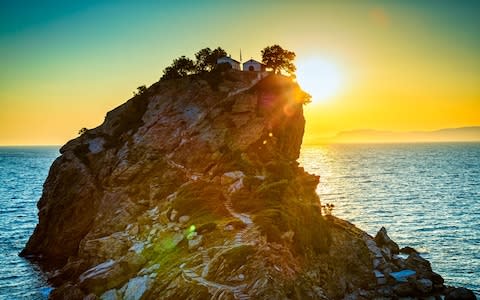
So is Croatia the new Greece? I’m not so sure. I have visited a dozen or so of Croatia’s islands over the years, and they’ve provided me with some cracking moments. On Veli Brijun I was taken for a spin in former president Tito’s Fifties pine-green Cadillac and met an elephant called Lanka. But it’s the Greek islands that have the unshakeable hold on my heart.
This grand passion dates back to the Seventies, when I first buzzed round rural Corfu on a bright orange hire-scooter with dodgy brakes. Everything was new to me then – the shimmering turquoise of the sea, the heady scent of wild thyme, the sugar-cube houses in sunlit lemon groves.

I remember the excitement of discovering the shrine of St Arsenius, a tiny chapel tucked into the folds of the sea-facing rocks south of Kalami bay. The writer Lawrence Durrell used to swim from there with his wife, Nancy, when they lived on Corfu in the Thirties. (In Prospero’s Cell he describes her diving “like an otter” to retrieve cherry stones from the sandy sea-floor.) Starkly beautiful and stone-silent, it is sheer magic.
Years later, in Ikaria, in the northern Aegean, my husband and I sat 600 metres up a mountainside drinking rare Pramnian wine in the moonlight, outside a secret cave hidden behind a slab of granite. Ikaria is said to be the model for the island of Aeaea, and it was the same dark red and sticky-thick wine Circe used to flavour the cereal with which she drugged Odysseus’s men. As stars wheeled overhead and waves crashed against the rocks far below, it felt as though we’d been transported 3,000 years back in time.

When it comes to history and legend, the Greeks have it in the bag. From the Palace of Knossos on Crete (home to the legend of the Minotaur), to St John’s stone pillow on Patmos (in the cave where he wrote “Revelations”), the Greek Mediterranean is a floating jigsaw puzzle of ancient ruins. Hiring a motor-boat to cross the narrow channel from the chic Kefalonian harbour of Fiscardo to rugged Polis Bay on Ithaca is like sailing direct into the world of Homer’s epic. There, in a low cave, archaeologists unearthed a priceless fragment of clay mask inscribed “To the glory of Odysseus”.

The Greek islands also win hands down on variety. There are pocket-sized gems such as Symi and Halki in the Dodecanese, their colourful Venetian-style harbours ringed with the grand Neoclassical mansions of former sea captains. There are iconic beaches – the silver scythe of Myrtos in Kefalonia, or Zakynthos’s dramatic cliff-backed Navagio, sheltering the rusty shipwreck left aground on its sand. And there are quirky hideaways like cute Kastellorizo, just off the coast of southwest Turkey, or sleepy Paleo Trikeri, off the Pelion peninsula (improbably dubbed “The Island of Dangerous Women”, when 5,000 female intellectuals were banished here from 1948 to 1953 after the Greek Civil War).
Of course, the Greeks have numbers on their side. Greece has 6,000 islands (225 of them inhabited) as opposed to Croatia’s 1,000 (of which fewer than 50 are inhabited). They also have greater accessibility (more than a dozen Greek islands have airports for international flights) and a much more favourable climate in shoulder seasons.
And the Greeks also have the simplest trump card of all: filoxenia – literally “the love of strangers” – is a defining national characteristic. If you haven’t already done so, it’s time to visit your first Greek island right now.
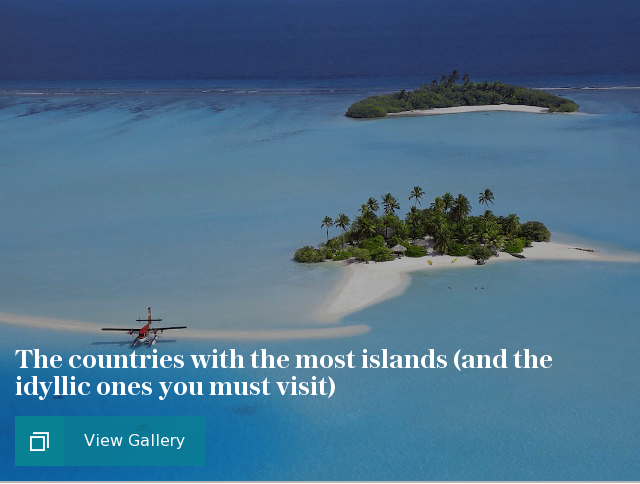
Why Croatia islands are better
Jane Foster
I’m lying in blazing sunshine on a bleached beach in a small sheltered cove. Behind me, steep rocky slopes are planted with pinewoods and vineyards. Out to sea, a fisherman in a wooden boat is throwing out nets. The water is glistening blue, and a gentle sea breeze cools the air. This is a Dalmatian island, and this scene has been unchanged for centuries.
How do I know I’m in Croatia? Could it not be Greece?
These countries, after all, have much in common – a balmy Mediterranean climate, scattered islands and an innate affinity with the sea. They’re both on the complex Balkan peninsula and both have been occupied (partially) by the Romans, the Byzantines, the Ottoman Turks and the Venetians. In fact, the ancient Greeks themselves founded several early settlements on Dalmatian islands.
But in the present day, they’re easy to distinguish: to start, Croatia is better organised (Vis allegedly won the Mamma Mia! contract thanks to greater ease at arranging filming permits).

For decades, Greece has relied on the simple “sea, sand and sunshine” formula to woo visitors. But Croatia, where the coast is dotted with pebble coves, has had to invent alternatives, particularly a host of outdoor activities and adventure sports for visitors. In excellent facilities, with enthusiastic instructors, you can try sailing, scuba-diving, windsurfing, sea kayaking, stand-up paddling (SUP) or cycling. I’ve been on wine- and olive-oil tasting cycling trips that last days (cyclingcroatia.com). I’ve tried sea kayaking too, around the rocky islands of the Zadar archipelago (malikadventures.com). I’ve yet to find the courage to take on the 3km per day swims between the islets of the Šibenik archipelago (swimtrek.com), but there’s something for everyone.
Croatia’s islands lie close to the mainland coast, and close together. If you’re sailing, it rarely takes more than a couple of hours to reach the next harbour, unlike the Greek islands on the Aegean, where land can be out of sight and you’re exposed to the ferocious meltemi wind in summer.
In Croatia, you can go dolphin spotting (dolphin-watching.com off Lošinj), or try freediving with a world champion (diving-croatia.hr on Vis). Unwind with wine tasting at Nada (nada-vrbnik.hr) in Vrbnik on Krk, and at Tomić Winery (bastijana.hr) in Jelsa on Hvar. And you’ll find old-fashioned konobe (taverns) serving authentic local food on all the islands – it’s lighter than Greek fare, with more fish and fresh salad, less meat and chips.
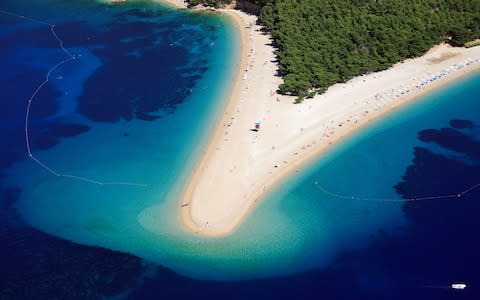
On over-commercialised Greek islands, in particular Santorini, one suspects that half the islanders have made a pact with the devil. Outrageously overpriced sun-beds on (black sand) beaches. By contrast, last summer, when the mayor of Hvar Town realised that rowdy youngsters arriving on party boats were causing havoc, the government intervened, enforcing fines for public nudity; this is not the destination for stag parties.

But maybe you just want a peaceful spot to swim and sunbathe. Croatia’s lack of sandy beaches has inadvertently saved the islands from over-development and big resorts – instead hotels here are about quality, not quantity. Croatia doesn’t draw the boozy young Brits in anything like the quantities Greece does. Instead, you’ll find some wonderful boutique hideaways, such as the Lešić Dimitri Palace on Korčula and Palmižana on Hvar. For something really special, rent a lighthouse on a remote uninhabited rocky islet (lighthouses.hr) or sleep in a bell-tent on glamping-island Obonjan (obonjan-island.com). and you’ll truly relax. For while Greek beaches are a delight, the devil of the holiday is in the detail. If you want a purely hedonistic holiday, go to the Greek islands; if you want a healthy and exhilarating island holiday, Croatia is your best bet.
The best islands for glamour
Greece: Santorini
Dazzling Santorini is impossibly photogenic. Atop the fiery red-black walls of the island’s rocky caldera (crater), villages perch like pearly tiaras, bubbling with blue-and-white domed churches. Below, vast and dreamy cobalt lagoons deliver the most bewitching sunsets in Greece, dissolving each evening into a gouache of pinks and golds. Honeymooners and A-listers – most recently Jennifer Lawrence, Shakira and Katy Perry – congregate for discreet decadence in the ritzy “cave” hotels and arty cocktail bars of exclusive Oia, on the northern tip of the island.
Join Oia’s Instagram set in deluxe retreat Canaves Oia (doubles from £360 B&B), a cliff-top cascade of ice-white suites, tiered balconies and glittering infinity pools.
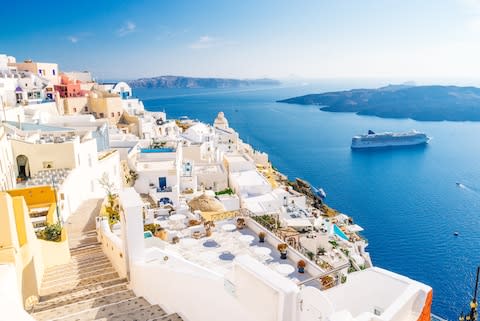
Croatia: Hvar
Beyonce and Jay-Z love it. So does Bond – Sean Connery, Roger Moore and Daniel Craig have all been spotted here. Hvar Town, with its elegant Baroque cathedral, aristocratic Venetian-era stone palazzi and hilltop fortress, is Croatia’s trendiest, ritziest and priciest island. It’s a warren of contemporary hotels, eateries specialising in lobster, champagne and lavender ice cream, and bijou stores selling jewellery and designer beachwear. Hula Hula (hulahulahvar.com) serves sundown mojitos at wooden sunbeds built into the rocks, as yachts moor up several abreast along the quay. After midnight, water taxis shuttle revellers to Carpe Diem Beach, where international DJs run the party.
Stay at the newly refurbished art-filled Hotel Adriana (rooms from £106).
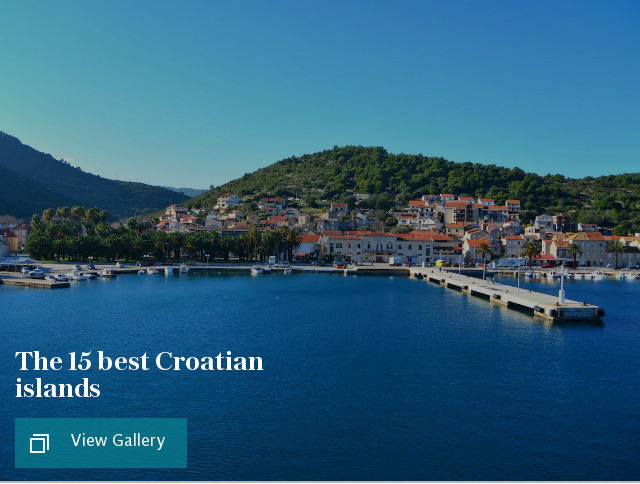
The best islands for activity breaks
Greece: Rhodes
With more than 300 days of sunshine a year, sandy Blue Flag beaches and state-of-the-art water sports centres, family-friendly Rhodes is the Dodecanese’s top destination for active holidays. The breezy southern cape of Prasonisi is serious surfing territory. The mountainous interior is brilliant for hiking and cycling. And the rugged eastern seaboard harbours a host of charming, less-crowded enclaves. Head for St Paul’s Bay, by the picturesque white-washed town of Lindos, for scuba-diving in turquoise waters beneath an ancient clifftop acropolis. Or try snorkelling in the crystal coves of pretty Kalithea. Or how about bareback horse-riding through breaking waves on Kiotari’s magnificent beach? Rhodescapes (rhodescapes.gr) offers a fantastic island-wide programme of activity-based day-trips.
Responsible Travel (responsibletravel.com) has seven-night B&B family holidays in July and August from £1,093 per adult, excluding flights (child discounts available).

Croatia: Brač
If you’re looking for an active outdoorsy holiday, as a couple or with energetic teenagers, Bol, on Brač’s sunny south coast, is your place. Bol owes its fame to Zlatni Rat beach, a spectacular 500-metres of fine pebbles, which extends perpendicular into the sea, changing shape depending on currents. These conditions make Bol Croatia’s top windsurfing destination - the maestral wind picks up speed in the narrow sea channel between the islands of Brač and Hvar. You might take a windsurfing course (bigbluesport.com), and hire equipment to experienced surfers, or have scuba diving lessons (the pebble seabed means excellent visibility; big-blue-diving.hr). On Brač’s north coast, in Sutivan, you can try sea kayaking or stand-up paddle boarding (aldura-sport.hr) . If tennis is your thing, Bol has a tennis centre with 26 clay courts, and if you just want to escape, hire bicycles (bigbluesport.com/biking) and peddle through Brač’s hilly interior, criss-crossed by marked trails.
Stay at Zlatni Bol Apartments (rooms from £40).
The best islands for sailing
Greece: Paxos
The Ionian island of Paxos was supposedly formed when Poseidon struck off a lush corner of nearby Corfu with his trident to create a secret playground for romps with his favourite sea-nymph. At just 11km by 3km, Paxos is sheer magic for a leisurely week’s sailing through contrasting seascapes. The gentle east coast is frilled with secluded beaches and feathered by olive groves; the wilder west is studded with eerily-glowing grottoes, crumbling marine archways and towering, bone-white escarpments. All three of the island’s small harbour towns – cosmopolitan Gaios, pine-ringed Lakka and chocolate box Loggos – are enchanting ports of call.
Hiring a yacht to join a seven-day Paxos flotilla through Sailing Holidays (sailingholidays.com) costs from £565pp, based on four sharing and including flights.
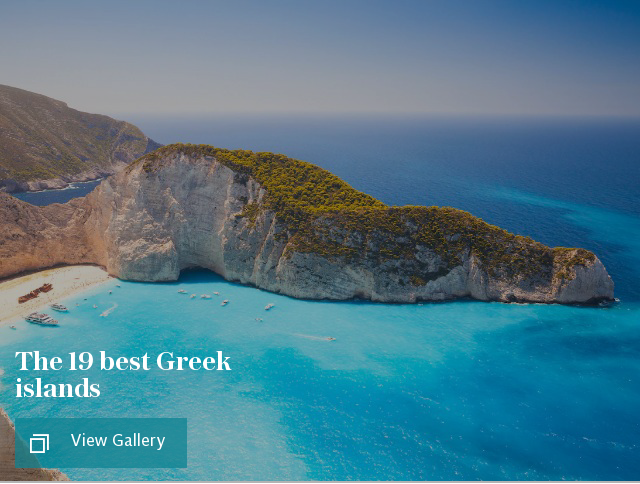
Croatia: The Kornati
The ultimate way to explore the Croatian islands is by sailing boat: the country has better-equipped marinas than Greece, and more of them. Charter a yacht from a marina on the mainland, and sail off into a turquoise haze of sea and sky, on an odyssey of the wild rocky sage-scented Kornati. This archipelago of 89-islands, islets and reefs is contained within Kornati National Park (np-kornati.hr) and named after the largest island, Kornat. Spend lazy afternoons snorkelling in translucent sea. At sunset, put down anchor in a sheltered bay (nautical guides list 16) and hop ashore to dine at one of several seasonal eateries, feasting on barbecued fish or roast lamb, and velvety red Dalmatian wine. Blissfully unexploited, the atmosphere is otherworldly – islanders from nearby Murter own land on the Kornati, rearing sheep, growing grapes and olives, and keeping bees, but no one lives here year-round. In peak season, daytrippers arrive from Zadar, but peace reigns once the last excursion boat has departed.
Nautilis Yachting has a four-cabin two-WC yacht for £1,896 with an early-booking discount (expires at the end of April; nautilusyachting.com).
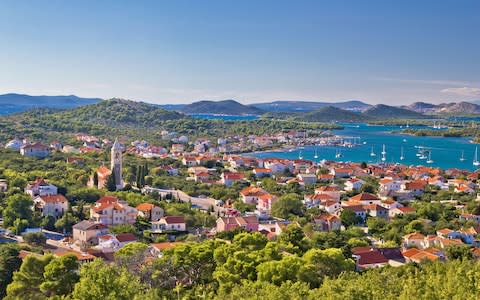
The best islands for agrotourism
Greece: Crete
Birthplace of Zeus, and blessed with rich soil and the longest season of sunshine, Greece’s southernmost island is heaven’s own banqueting table, laden with organic produce fit for the gods. Hillsides fume with the scent of rosemary and oregano, there are 1.5 million olive trees, and acres of farmland deliver the Med’s healthiest national diet. Delicious local dishes include lamb with stamnagathi (wild green chicory) and sarikopitakia – pastry spirals stuffed with creamy mizithra sheep’s cheese and drizzled with thyme honey. In rustic restaurant Ntounias, 30 minutes from Chania, Slow Food chef Stelios Trilirakis conjures up amazing Cretan specialities and local wine fresh from his family’s farm (ntounias.gr).
Idyllic agrotourism retreat Eleonas Country Village near Zaros (eleonas.gr) has stone cottages from £95 per night, B&B and a great organic restaurant.

Croatia: Korčula
Wholesome fresh food and good wine are essential holiday ingredients. In Korčula’s inland villages, rustic eateries serve traditional local dishes made from home produce, as opposed to voguish Creative Mediterranean cuisine. The best is Konoba Mate (konobamate.hr) in Pupnat, serving delectable wild asparagus omelette, home-cured pršut (prosciutto) and goat’s cheese. Nearby, in Žrnovo, the speciality is Žrnovski makaruni (handmade pasta) – try it at Konoba Maha (konoba-maha.com) accompanied by vepar (wild boar) or pašticada (beef stewed in tomato, wine and prunes). Korčula also produces excellent white wines. The oldest vineyards were planted by the Greeks in Lumbarda in the 3rd-century BC – taste their Grk at family-run Bire (bire.hr). For Korčula’s other white, Pošip, head for Smokvica, and call at Vinarija Toreta.
See our pick of the best hotels in Korčula
The best islands for a city/beach twin break
Greece: Athens/Hydra
Less than two hours by hydrofoil from Athens, car-free Hydra is a laid-back refuge after the heat and dust of Greece’s glorious but exhausting capital. Its horseshoe harbour is a stunning miniature amphitheatre, tiered with pastel mansions and terracotta-tiled roofs. Artists, film stars and rock royalty have flocked here since the Sixties, seduced by its time-warp charm - most famously Leonard Cohen, who bought a house at the top of the town. By day, take a water taxi to pine-backed Bisti beach. Come evening, browse the waterfront’s bijou galleries and jewellery shops before lingering over mezze on the terrace of former jet-set haunt, Omilos (omilos-hydra.com). It’s where Aristotle Onassis romanced Maria Callas and Jackie Kennedy – though probably not at the same time.
Boutique hotel Cotommatae 1810, a restored former sea captain’s mansion, has doubles from £125.
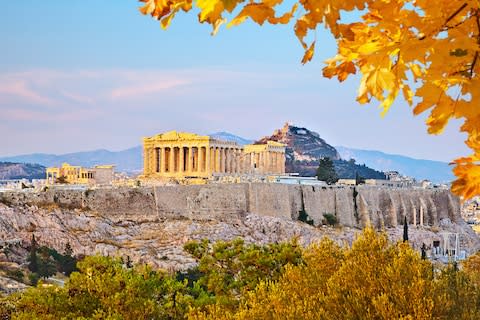
Croatia: Dubrovnik/Šipan
Combine culture and escapism, spending a couple of days sightseeing in medieval walled Dubrovnik on the mainland, then flee the crowds and catch a boat to Šipan (population 436), one of the tiny car-free Elafiti islets. In the 17th-century, Dubrovnik noble families would have a town house within the city walls, and a country villa on the Elafiti (Koločep, Lopud and Šipan). Nowadays, Šipan is connected to Dubrovnik’s Gruž port by regular ferry (journey time 1hr 25min) and catamaran (1hr 15min), with stops at Lopud and Koločep en-route, so you won’t feel too cut off. Šipan has just two villages, Šipanska Luka and Suđurađ, each with old stone cottages built around a sheltered bay, on opposite sides of the island. A six-kilometre time-trodden path connects the two, passing across a fertile plain, planted with olive groves and fruit orchards. Šipan’s rocky coast conceals several pebble beaches, perfect for bathing in crystal clear turquoise sea.
Fuss-free Hotel Šipan has rooms from £78 per night.


